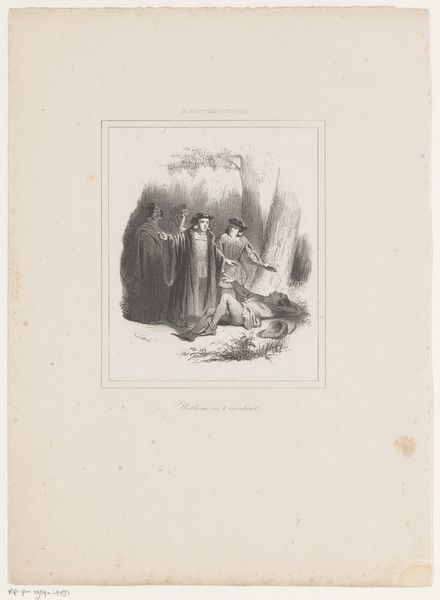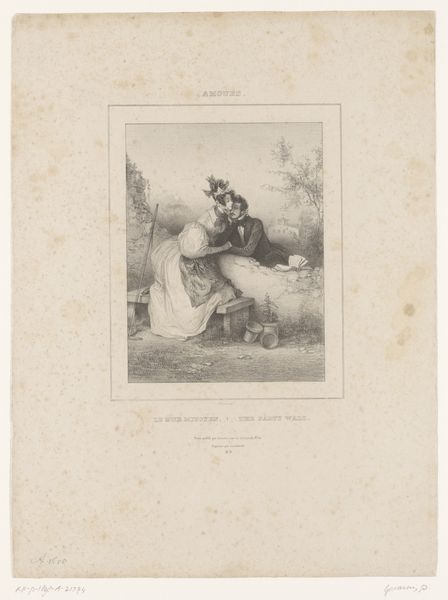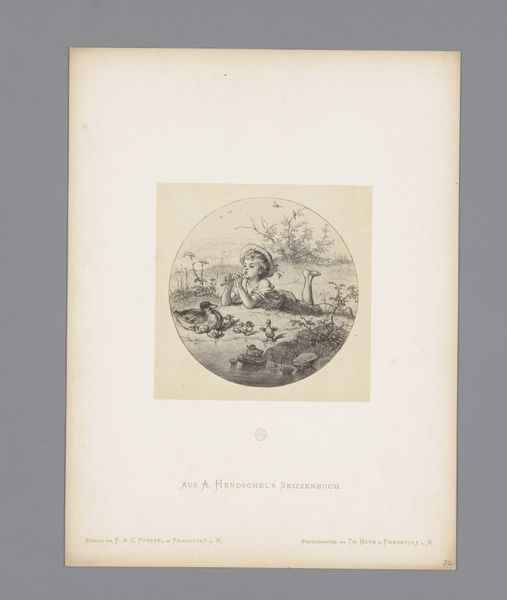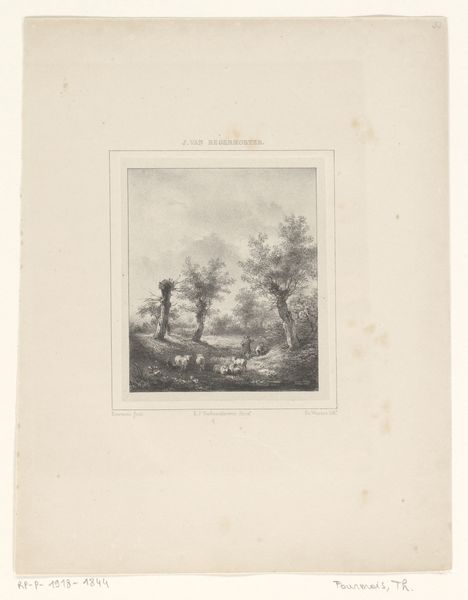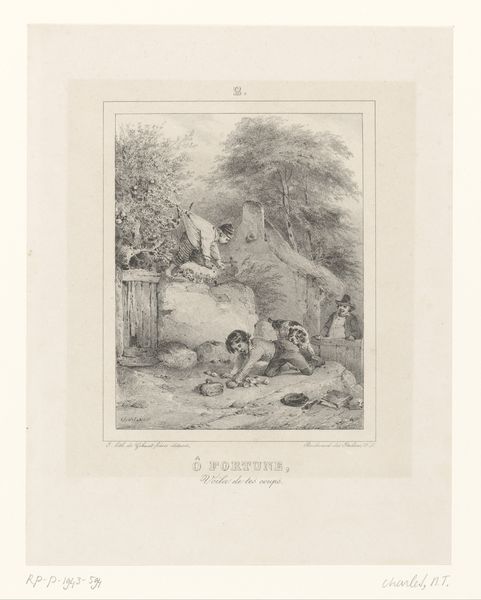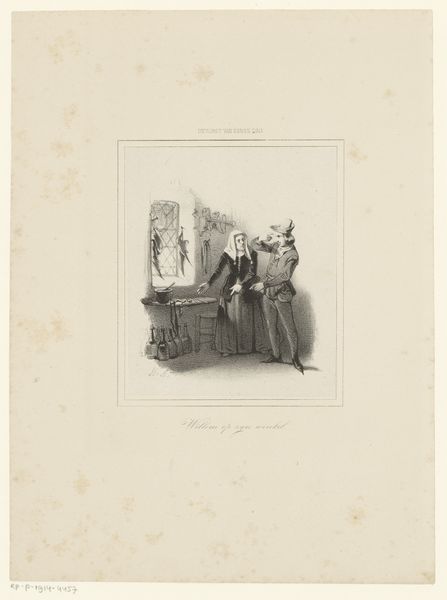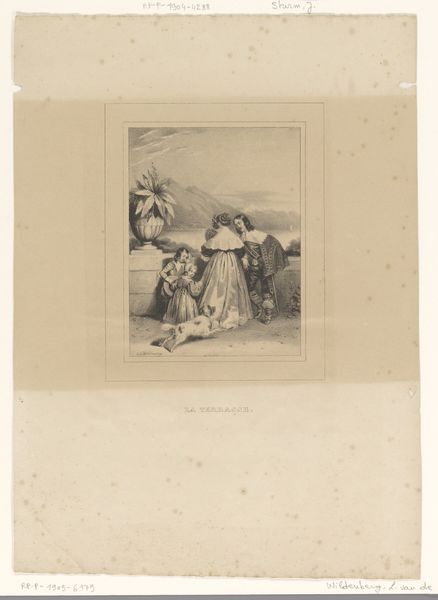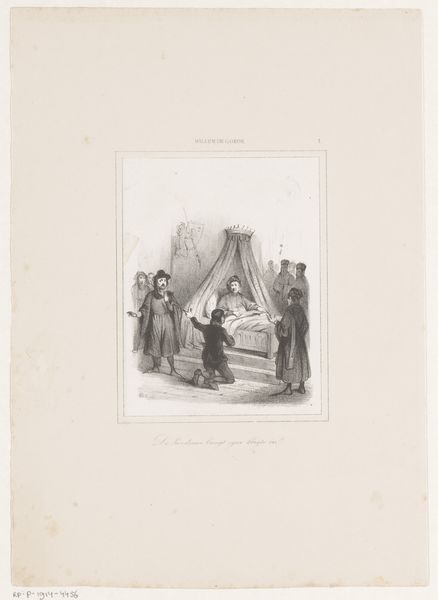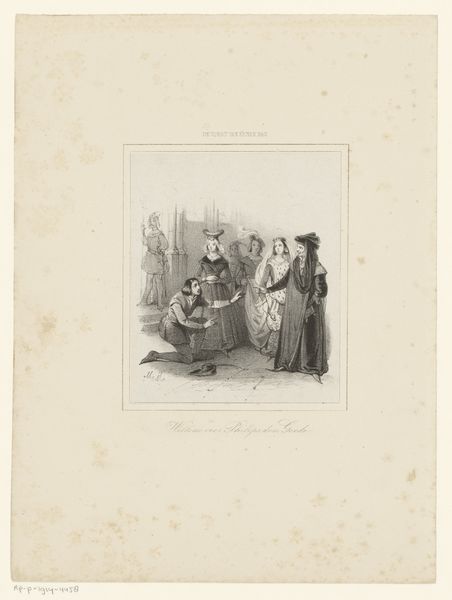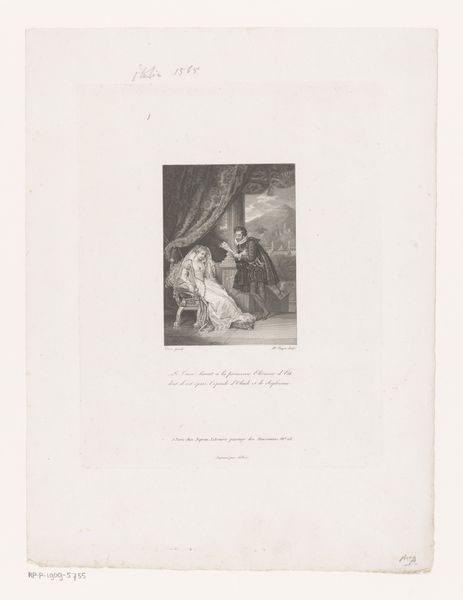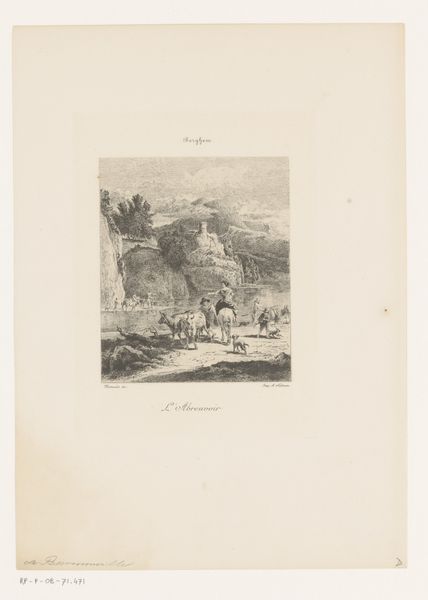
drawing, print, paper, engraving
#
drawing
#
narrative-art
#
ink paper printed
# print
#
old engraving style
#
landscape
#
white palette
#
figuration
#
paper
#
natural colour palette
#
romanticism
#
line
#
genre-painting
#
engraving
Dimensions: height 310 mm, width 220 mm
Copyright: Rijks Museum: Open Domain
Curator: This engraving, "Ambtenaar van Willem de Goede" created by Herman Frederik Carel ten Kate in 1842 and held here at the Rijksmuseum, offers a fascinating glimpse into a bygone era. Editor: My initial impression is one of contained chaos. The details are finely wrought, but there's a certain nervous energy in the scene with the farmhands in the background, a bit like watching a carefully staged play with unpredictable actors. Curator: Indeed, that nervous energy could be understood within the historical context of the 19th century and its rigid social hierarchies. This work depicts a tax official from the time of William the Good collecting payments, an interaction ripe for highlighting the power dynamics between rulers and those ruled. Editor: It’s a narrative that speaks to the inherent tension between the state and the individual. Who decides how resources are extracted? And what recourse does the community have? It looks as if a group of farmers in the distance can hardly hide their resentment of being stopped to give away their products. The gazes are interesting—a dance of forced subservience and subdued defiance, something which always fascinated me, as an echo of a class struggle! Curator: Absolutely. Ten Kate’s skill lies in rendering these tensions palpable within a seemingly mundane scene. He captures the specific visual markers of authority in dress and stance. But note how even the animals seem weighed down with a sad realism that contributes to the overarching sense of resignation. We must look into those figures. Editor: I think it works. This official representative isn’t simply a neutral recorder. It feels the image wants us to feel the official being the physical manifestation of laws made elsewhere, extracting labor from these anonymous people. Curator: That resonates strongly, yes. The artist seems keenly aware of the potential for the medium of art itself to be a space where power structures can be either reinforced or subtly critiqued. Editor: So as viewers, we are drawn to think, how much of a tool of political narrative the figure of that tax collector has? And also, about those at the bottom, how their struggles echo still. It is the romantic representation of reality through history as a narrative to understand the contemporary state of things. Curator: A wonderful connection to make, thank you! The image does, through its social history, open possibilities to discuss the state we are in today and the images in history's reflection to it.
Comments
No comments
Be the first to comment and join the conversation on the ultimate creative platform.
